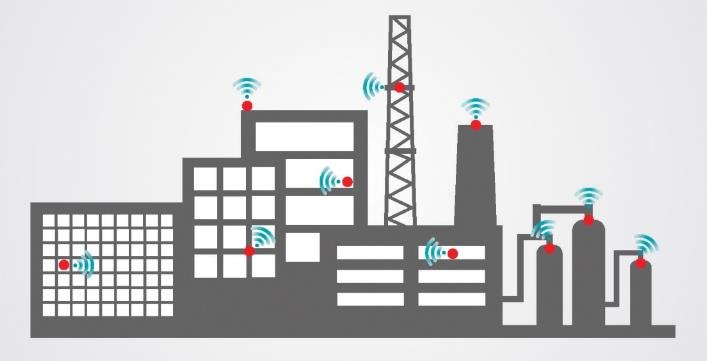SSZTCD4 august 2015 CC1310 , CC2540T , CC2564 , CC2630 , CC2640 , CC2650 , CC3100 , CC3100MOD , CC3200 , CC3200MOD , WL1807MOD , WL1837MOD
Wireless connectivity technology is quickly making its way into the industrial market – freeing developers from the restriction of cables and helping them increase efficiencies and productivity, cut costs and better control processes and equipment. Enabled by ultra-low power sensors, wireless connectivity standards and highly integrated microcontrollers (MCU), the industrial Internet of Things (IoT) is spreading with applications such as factory and building automation, energy infrastructure, and smart lighting, as well as non-industrial applications such as automotive, retail, health care and others.
Of course, industrial system designers need to consider a number of factors with regard to wireless connectivity. These include choosing a wireless connectivity standard that best fits the requirements and use cases of the application; the power consumption and compatibility of the device with sensors, MCUs, gateways, servers and others; ease of integration in industrial equipment; cloud connectivity; and security. There’s also a choice between implementing an entirely new system that’s completely wireless or simply adding wireless functionalities to existing wired designs.
When adding wireless connectivity to your industrial design, there is a lot to think about, this is why we’ve created an e-book, Understanding Wireless Connectivity in the Industrial IoT, to help you make decisions when it comes to wireless connectivity and industrial applications. Whether you are adding Bluetooth®, Wi-Fi® or Sub-1 GHz technology to your design, we’ve compiled relevant TI Design reference designs, blog posts, detailed product overviews and a white paper to help you push the boundaries of the industrial landscape.

So have you been asking yourself how wireless connectivity could improve your industrial application? Or how to choose the right connectivity standard that fits your industrial design? Log-in and download the industrial e-book today!
Share which wireless connectivity technology you chose to integrate into your next industrial project on Facebook, Twitter, Google+ or LinkedIn using #IIoT.